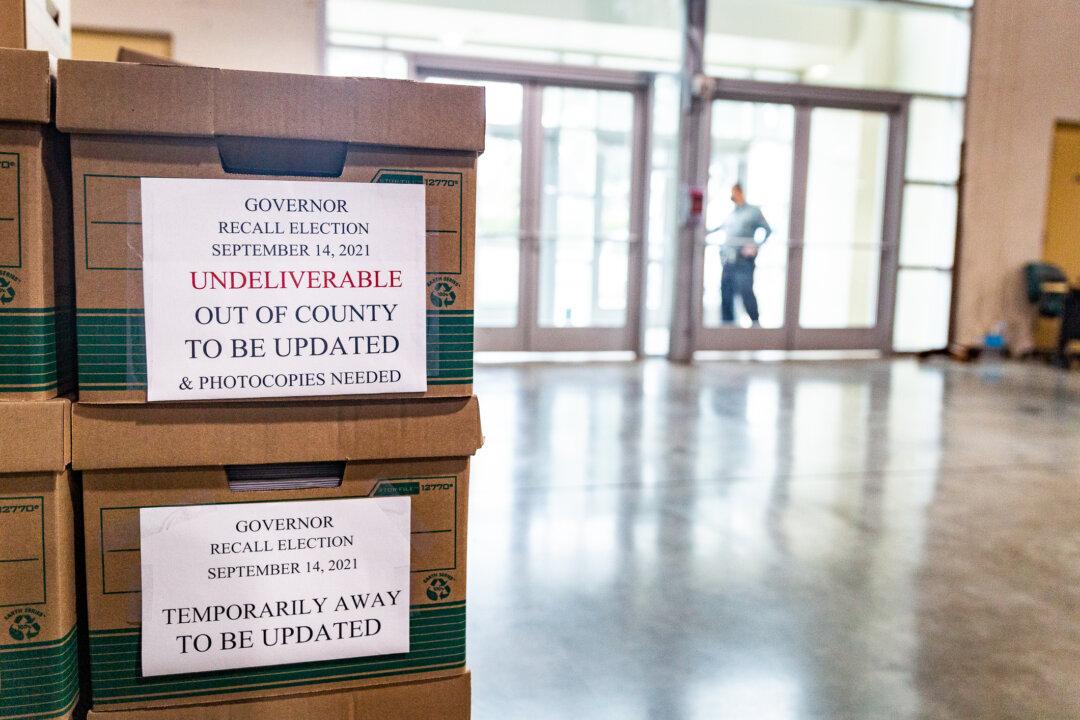A citizen election observer has raised concerns over what she estimates could be as many as 100,000 “undeliverable ballots” returned to Orange County’s main vote center during the gubernatorial recall election.
The observer, who asked to go by the pseudonym Tracy Verdi, told The Epoch Times she estimates that “tens of thousands” and “maybe 100,000” undeliverable vote-by-mail ballots were returned to the facility in Santa Ana, Calif., in early September.





